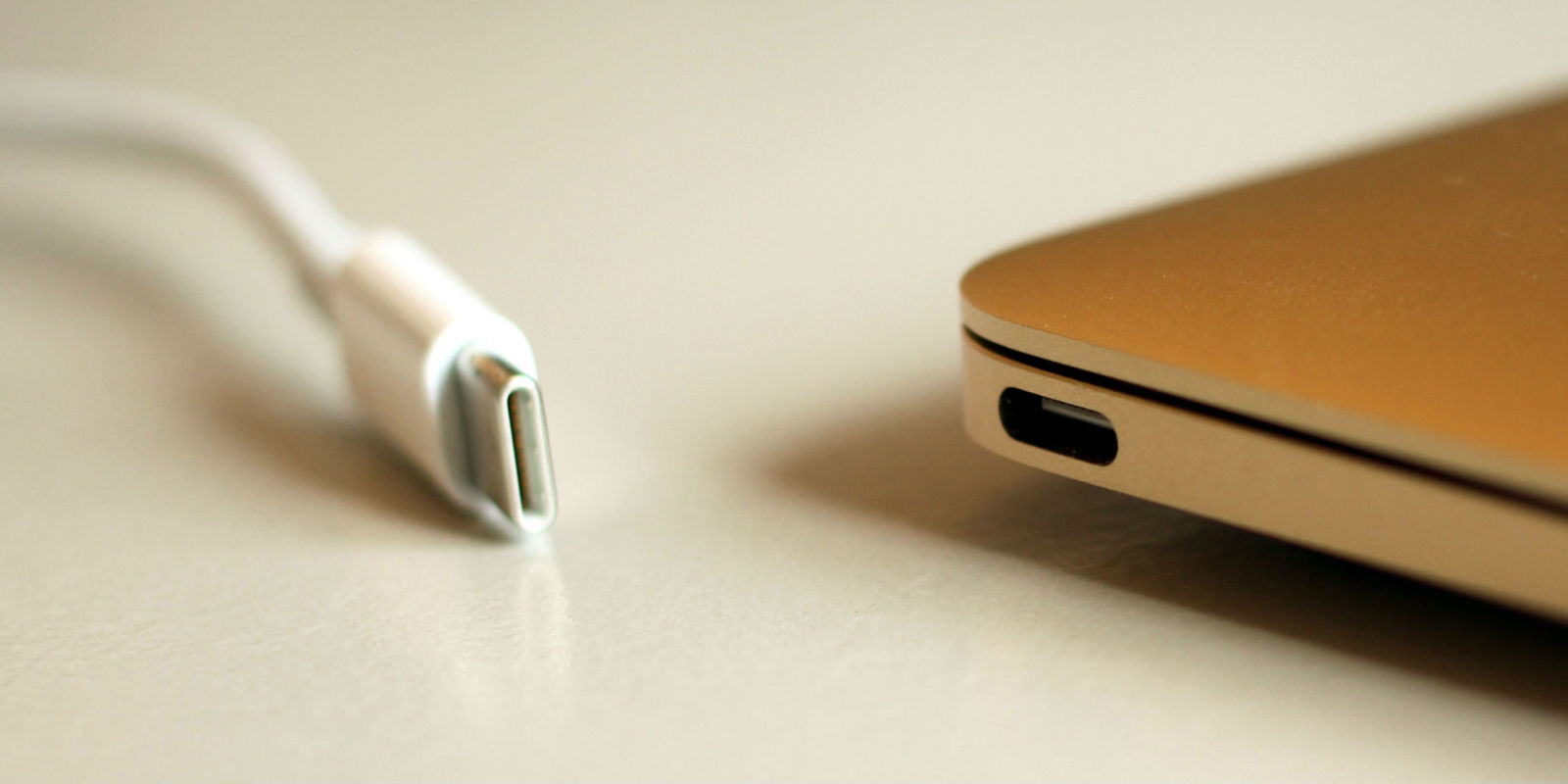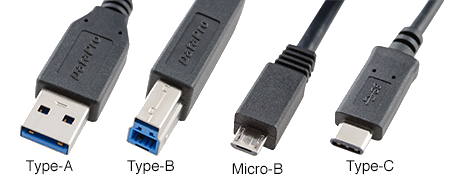Good News Everyone, USB is Changing… AGAIN
For those who want the speeds of TB3, but the ease, access and comparative affordability of USB, I have good news – USB4 has been announced, along with USB 3.2 being updated. This is very good news for those that desire faster and more fluid peripherals, but it is not quite so simple. The days of USB being a rather simple affair are long behind us and with a new USB naming system submitted in a white paper recently by USB.org, things are going to get a litle confusing. The names of new and old connections are going to change (which can be a real headache for manufacturers and their branding/livery), the hardware is getting an upgrade and with a similar upheaval that we saw with USB 3.0 becoming USB 3.1 Gen 1 and Gen 2 a couple of years back. Today I want to tell you everything you will need to know about these two, soon to be available, connections. I say ‘soon’, we are looking at a 2020 release schedule at the very earliest and that is jsut at the point of the motherboard manufacturer. So, let’s share everything we know about USB4.
USB 4.0 – What You Need to Know
First, we will discuss the newest development, USB 4. For many of us, USB 4 has been long overdue, with the original USB 3.0 announced way back in 2008, you can not say they have rushed it! However, more tech-experienced users will know that USB 3 has evolved alot over time and evolved into several subversions and physical connection types over time. USB 4 is going to be genuine hardware change at each port of connection and shares a number of the architecture of Thunderbolt 3, but not the manufacturer crippling Intel licensing difficulties that Thunderbolt has (hence why it’s a much more expensive and less common connection). So, here is everything about USB 4 that you need to know.

USB 4 will feature 40Gb/s Transfer Speeds
Probably the most popular detail is that USB 4 will feature a maximum speed/throughput of 40Gb/s (40 gigabits, or 40,000MB per second). You will still, of course, be limited by the overall maximum speed of the device you are connecting with (the amount of data it can push to the USB 4 connection initially) and this 40Gb/s can be used by multiple connected devices via a USB 4 hub, but that is a seriously impressive connection. Only Thunderbolt 3 currently provides taht level of plug-n-play external speed in 2019. One can imagine that before USB 4 arrives, we will see Thunderbolt 4 announced before 2020 to rival it.
USB 4 will also be available in 10Gb/s and 20Gb/s Revisions
It has also been confirmed that USB 4 will be available in sub-versions that provide less speed and power (much as we see numerous versions of USB 3.1 and USB with their own speed and Power Delivery limits). This is because they want this connection to be used on a multitude of devices and some just won’t support/need the full 40Gb/s internally. So a 10Gb/s and 20Gb/s version of USB4 over USB Type-C will be available at launch and intended for portable/efficient devices, such as smartphones, Chromebooks and low-end laptops.
USB 4 will actually be known as USB4
This is an odd one, but USB.org have stated that the branding/naming of USB 4 will actually be ‘USB4‘. They have stated this is because of the current branding of USB 3.1 and USB 3.2, wanting to separate it as much as possible as more than just a tweaked variation.
USB4 will only be 40Gb/s in USB-C
If you want to use USB4 to it’s fullest extent in a 1-2-1 connected environment or in a daisy-chain/dock environment, then you can only get it in USB-C type connector – no patch over cable. Because of the dynamic handling of the data internally, as well as the power delivery involved, USB4 in its full form is only available in USB Type C connectivity.

USB4 will be Backwards Compatible
That said, you are going to be able to use USB-C to USB-A, USB-B and USB-C cables to connect older USB 1.0, USB 2.0, USB 3.1 and USB 3.2 devices – you will jsut not get the 40Gb/s connection and it will max out at whatever the bandwidth of the connected device is. This was fairly predictable and still positive to know that USB backwards compatibility is being maintained.
USB4 will Shift Bandwidth Priority between Tasks with Dynamic Speed Adjustments
One of the more interesting new functions of USB4 is that is will feature dynamic handling. In real terms, this means that if several connections are taking place through a single USB4 USB-C connection (such as running through a docking station or daisy-chain), the available bandwidth won’t just divide between the number of tasks, it will give each connection their max speed where possible. In real terms, that means:
In previous USB architecture, at 40Gbs, if these devices are all on the same daisy chain e.g
4K Display, requires 8Gb/s – 8Gb/s Max Speed – FULL SPEED
SSD RAID Storage, requires 3Gb/s – 8Gb/s Max Speed – 5Gb/s Wasted Bandwidth
10Gbe Network, requires 10Gb/s – 8Gb/s Max Speed – BOTTLENECK
5K Display, requires 12Gb/s – 8Gb/s Max Speed – BOTTLENECK
LaCie RAID SSD, requires 3Gb/s – 8Gb/s Max Speed – 5Gb/s Wasted Bandwidth
However, in the new USB4 Dynamic Architecture, at 40Gbs, if these devices are all on the same daisy chain e.g
4K Display, requires 8Gb/s – 8Gb/s Max Speed – FULL SPEED
SSD RAID Storage, requires 3Gb/s – 3Gb/s Max Speed – FULL SPEED
10Gbe Network, requires 10Gb/s – 10Gb/s Max Speed – FULL SPEED
5K Display, requires 12Gb/s – 12Gb/s Max Speed – FULL SPEED
LaCie RAID SSD, requires 3Gb/s – 3Gb/s Max Speed – FULL SPEED
4Gb/s Available Bandwidth for other devices or to help existing devices if demand increases.
This makes your USB network a great deal faster in many ways and ultimately more efficient too.
USB4 Still has no Guarantees to Work with Thunderbolt 3
One area that was a little skirted around was where USB4 and Thunderbolt 3 meet. In theory, Thunderbolt 3 will support USB4 and it’s 40Gb/s speed, as it is very similar in architecture, however, Intel is notoriously protective of it’s licensing of Thunderbolt 3, and it isn’t too hard to see why Intel would drag their feet a little on confirming this. For manufacturers, adding USB4 will be a considerably easier thing to do than Thunderbolt3, as there are no obtrusive and expensive license requirements for USB, as you have with Thunderbolt 3. Thunderbolt and Intel may make it complicated for manufacturers to implement both as a single connection and make them choose. This is moderately unlikely though and more likely will all get ironed out later, as Intel is probably getting Thunderbolt4 underway by then.
USB4 Will Be More Expensive
One thing that isn’t hugely surprising is that USB4 will be more expensive than the current USB hardware available. USB.org say this is due to more unique and precise components required and given the prevalence and popularity of USB as a connection, we aren’t in a huge position to argue with them on this. Exactly prices compared with USB 3/3.1/3.2 are yet to be confirmed.
USB4 Will Be Available for Manufacturers in Late 2020
Despite all the news about USB4, it is still a long way away from commercial release and USB.org state that they usually have an 18-24 month announcement-to-availability schedule at the very least. This is most likely just to get it to the point of the manufacturer in our hardware and can see peripheral adoption taking a little longer.

USB 3.2 – What You Need to Know
The other important USB update we learnt was regarding USB 3.2. We already covered this last year with USB 3.2 was announced and since then there has been relative silence. It is still not commercially available, but despite this, the USB 3.2 20Gb/s connection that will be the final version of USB 3.x has already undergone a few revisions. The USB 3.2 specification defines multi-lane operation for new USB 3.2 hosts and devices, allowing for up to two lanes of 10Gbps operation to realize a 20Gbps data transfer rate. While USB hosts and devices were originally designed as single-lane solutions, USB Type-C cables were designed from the outset to support multi-lane operation to ensure a path for scalable performance. Below is what we know so far:
USB 3.1 is Now USB 3.2
Yep, another name change. Not only is the naming standard of USB 3.1 going to change AGAIN, but now the unreleased USB 3.2 has had a change too. Below are the current USB 3.x versions and what they will be known as:
USB 3.0/USB 3.1 Gen 1 (5Gb/s) = USB 3.2 Gen 1
USB 3.1 Gen 2 (10Gb/s) = USB 3.2 Gen 2
USB 3.2 (20Gb/s) = USB 3.2 Gen 2×2
Yep, USB 3.1 as a name is being retired and replaced by USB 3.2 in 3 separate versions, each with their own speed and power delivery. This is going to be a nightmare from brands that already have retail packaging and specification/data sheets online. Still, least they are planning ahead and giving brands a couple of years to turn this around.
USB 3.2 Gen 2×2 Requires USB-C at Both Ends
Much like USB4, the new USB 3.2 Gen2x2 (jeez…that name!) will only be able to provide the full speed and power via USB Type C ports and cables, as the hardware architecture and multi-lane internal design allows these kinds of exchanges. No doubt you can use USB-C to USB-A cables, but they will immediable bottleneck your connection to 5Gb/s or 10Gb/s, along with minimized power for the connected device if it wants to charge from it.
USB 3.2 Gen 2×2 is Backwards Compatible
Unsurprisingly, but still of note, is that USB 3.2 Gen 2×2 will be backwards compatible with previous iterations of USB (USB 2.0, USB 3.0, etc), though of course, connectivity will be limited to the slowest port in the connection.
USB4 and USB 3.2 Conclusion
There is no denying that a number of people are going to be confused and a little annoyed by the changes in USB naming standards, as it will affect retail packaging and specifications going forward, but aside from that, I think the idea of a more affordable and universal plug n play alternative to Thunderbolt3 is going to be popular and if USB4 can manage to reach us before the inevitable release of Thunderbolt4, then all the better. Don’t forget to subscribe to stay up to date with the latest innovations in technology throughout 2019 and more.
📧 SUBSCRIBE TO OUR NEWSLETTER 🔔
🔒 Join Inner Circle
Get an alert every time something gets added to this specific article!
This description contains links to Amazon. These links will take you to some of the products mentioned in today's content. As an Amazon Associate, I earn from qualifying purchases. Visit the NASCompares Deal Finder to find the best place to buy this device in your region, based on Service, Support and Reputation - Just Search for your NAS Drive in the Box Below
Need Advice on Data Storage from an Expert?
Finally, for free advice about your setup, just leave a message in the comments below here at NASCompares.com and we will get back to you. Need Help?
Where possible (and where appropriate) please provide as much information about your requirements, as then I can arrange the best answer and solution to your needs. Do not worry about your e-mail address being required, it will NOT be used in a mailing list and will NOT be used in any way other than to respond to your enquiry.
Need Help?
Where possible (and where appropriate) please provide as much information about your requirements, as then I can arrange the best answer and solution to your needs. Do not worry about your e-mail address being required, it will NOT be used in a mailing list and will NOT be used in any way other than to respond to your enquiry.

|
 |
A Buyer's Guide to Travel Routers - GET IT RIGHT, FIRST TIME
Jonsbo N6 DIY NAS Case Review
The Best Bits (and Worst Bits) of NAS of 2025!
Minisforum MS-02 Ultra Review
Minisforum N5 NAS, 6 Months Later - Better, Worse, the Same?
Beelink ME Pro NAS Revealed
Access content via Patreon or KO-FI





Discover more from NAS Compares
Subscribe to get the latest posts sent to your email.






Hello, i wanted to buy a monitor, but it has these options to choose one from and Im totally confused:
10 point rouch, USB 3.2, USB-C 60W, USB-C 65W, USB-C 80W, USB-C 90W, (USB-C 90W, RJ45), USB-C 96W
REPLY ON YOUTUBE
Great video – not only good info but also shows why white cables and accessories are a terrible idea. Your A to C cable has probably been tossed Ina bag a few times and used for a couple years yet it looks like you just pulled it out of your ass.
REPLY ON YOUTUBE
Hi – I am as confused as hell about USB4 backwards compatibility with USB 3.2 gen 2×2. I hoped your article might help but it hasn’t resolved my fundamental question which is: should a USB 3.2 Gen 2×2 device work at full speed when connected to a USB4 bus? This seems a really hard question to find the answer to!
I have a MacBook Pro 2020 M1 model where the spec says it has Thunderbolt 3, USB4 and USB 3.1 Gen 2. If you look in the system report you can see 2x USB 3.1 buses and 2x buses labelled Thuderbolt/USB4.
I also have a USB 3.2 Gen 2×2 SSD.
When I connect the SSD it connects to the USB 3.1 bus and hence runs much slower than its potential. It is the same whicheveer USB-C cable I use and I have tried cables that are labelled Thunderbolt 4 and USB4.
So my question is: should a Gen 3.2 2×2 device work with USB4? I assume it should as USB is always backwards compatible – is 3.2 gen 2×2 an exception?
Thanks for helping
(BTW read and write speeds are pretty good – just frustrated that they are less than half what they could/should be – I really think this device should work at full speed when connected via USB4 cable!)
Covid means widespread adoption won’t occur till 2022 or 2023.
REPLY ON YOUTUBE